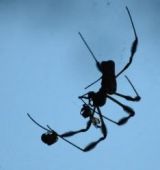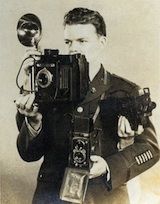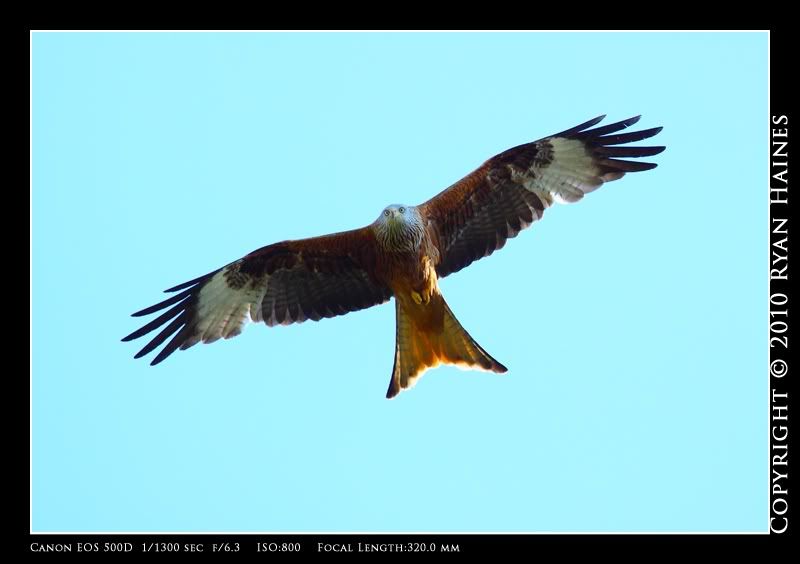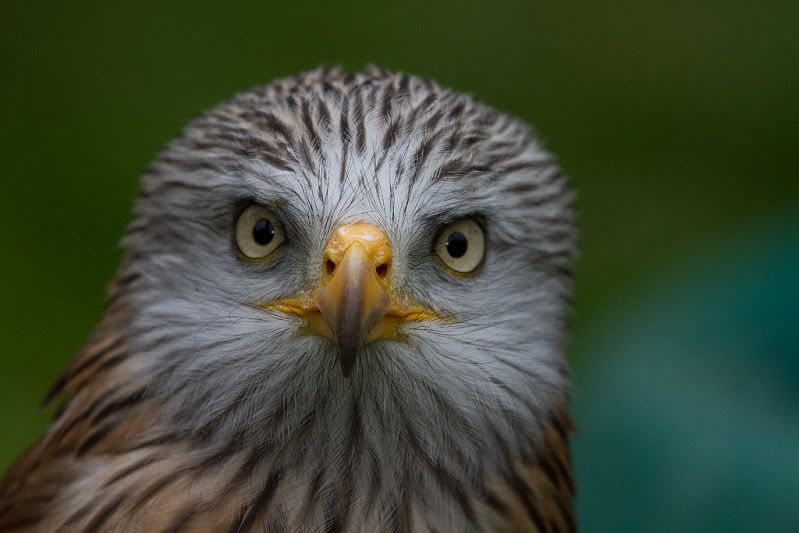- Forum
- Photography and Camera Forum
- Photo Galleries - For General Display or Critique
- Nature and all Wildlife
- A Kite!!!
A Kite!!!
-
 Topic Author
Topic Author
- Dori
- Moderator
-
- Nikon D5000
- Followers: 167
- Posts: 7371
-
Points:
12
-

- MLKstudios
- Banned
-
- D800 ;-)
- Followers: 72
- Posts: 4480
-
Points:
2
Post #110136
Matthew
PS or you could "fix it in post".
Matthew L Kees
MLK Studios Photography School
www.MLKstudios.com
[email protected]
"Every artist, was once an amateur"
-
 Topic Author
Topic Author
- Dori
- Moderator
-
- Nikon D5000
- Followers: 167
- Posts: 7371
-
Points:
12
-

- MLKstudios
- Banned
-
- D800 ;-)
- Followers: 72
- Posts: 4480
-
Points:
2
Post #110143
Matrix (or Evaluative) is doing compensation for you. We just have no idea by how much. It could add a third of a stop to one shot and 2/3rds to the next.
But, we do know it keeps getting better at math.
Matthew
PS I ask my students to use CWA metering, as it is something that can be learned. It's an OLD photographic standard.
Matthew L Kees
MLK Studios Photography School
www.MLKstudios.com
[email protected]
"Every artist, was once an amateur"
-

- TheNissanMan
- Moderator
-
- Canon 7D
- Followers: 34
- Posts: 826
-
Points:
135
-
 Topic Author
Topic Author
- Dori
- Moderator
-
- Nikon D5000
- Followers: 167
- Posts: 7371
-
Points:
12
Post #110151
MLKstudios wrote: CWA == Center Weighted Averaging metering mode. It makes the scene a "middle gray" (it's based on 18% reflectance), and is something you can learn and be able to compensate for later.
Matrix (or Evaluative) is doing compensation for you. We just have no idea by how much. It could add a third of a stop to one shot and 2/3rds to the next.
But, we do know it keeps getting better at math.
Matthew
PS I ask my students to use CWA metering, as it is something that can be learned. It's an OLD photographic standard.
My Dad taught me that! I just didn't understand the abbreviation. That is where I goofed, I was using Matrix, Thanks!
TheNissanMan, it's called the Swallow Tail Kite. Beautiful to watch fly, they dance in the air with each other! Swallow Tail Kite
Don't pi$$ me off, I am running out of room to store the bodies...
Resident Texasotan...
-

- photobod
- Paparazzi
-
- Nikon D800 + D300
- Followers: 563
- Posts: 8907
-
Points:
150
Post #110200
www.dcimages.org.uk
"A good photograph is one that communicate a fact, touches the heart, leaves the viewer a changed person for having seen it. It is, in a word, effective." - Irving Penn
-
 Topic Author
Topic Author
- Dori
- Moderator
-
- Nikon D5000
- Followers: 167
- Posts: 7371
-
Points:
12
-

- MLKstudios
- Banned
-
- D800 ;-)
- Followers: 72
- Posts: 4480
-
Points:
2
Post #110217
JMO Matthew
Also a "creative exposure" is when you use a setting different than the one the camera gives you. Not one with the same EV based on reciprocity (another error in BP's book).
An example is photographing a couple at sunset on a beach. Do you subtract from the exposure to make a silhouette with a deep colored sky, or add to the exposure so you can see their faces -- or add a flash for fill so you can have both facial detail AND a deep sky? The answer is D) all the above. There is no one right answer but how YOU want the picture to look.
Or you can use the Green setting (with Matrix style metering) and let the camera decide for you.
Matthew L Kees
MLK Studios Photography School
www.MLKstudios.com
[email protected]
"Every artist, was once an amateur"
-
 Topic Author
Topic Author
- Dori
- Moderator
-
- Nikon D5000
- Followers: 167
- Posts: 7371
-
Points:
12
Post #110247
Ok, call me a pinhead but you lost me here.FYI anyone who tries to explain exposure while ignoring metering modes is another crumb gatherer. Not a master of photography. How we "pros" read (or interpret) the info given to us by the meter is completely based on the chosen metering mode. We first need to know what the meter is based on.
That is what I used, how would center-weighted have improved it??Or you can use the Green setting (with Matrix style metering) and let the camera decide for you.
Don't pi$$ me off, I am running out of room to store the bodies...
Resident Texasotan...
-

- MLKstudios
- Banned
-
- D800 ;-)
- Followers: 72
- Posts: 4480
-
Points:
2
Post #110251
Was my attempt to keep the blind from leading the blind.
CWA is a photographic standard (based on 18% reflectance). It can be learned and later adjusted from when used as a basis for exposure readings. Matrix metering also has no foundation, and there is no way to "guess" by how much you need to adjust from a Matrix style indication. You just have to trust it is doing the right thing. That it is making the correct compensation for you.
Does that make sense?
Matthew
Matthew L Kees
MLK Studios Photography School
www.MLKstudios.com
[email protected]
"Every artist, was once an amateur"
-
 Topic Author
Topic Author
- Dori
- Moderator
-
- Nikon D5000
- Followers: 167
- Posts: 7371
-
Points:
12
Post #110257
I see.That was a BP slam. He doesn't cover metering modes BEFORE talking about metering. His teaching method has NO foundation.
I have read many writings on metering/exposure, my Dad's books, online etc. Asked many questions, but I still don't 'get' it.CWA is a photographic standard (based on 18% reflectance). It can be learned and later adjusted from when used as a basis for exposure readings. Matrix metering also has no foundation, and there is no way to "guess" by how much you need to adjust from a Matrix style indication.
Does that make sense?
Don't pi$$ me off, I am running out of room to store the bodies...
Resident Texasotan...
-

- MLKstudios
- Banned
-
- D800 ;-)
- Followers: 72
- Posts: 4480
-
Points:
2
Post #110261
Those five readings then got compared to pics in the camera's memory taken by professionals (who knew how to compensate for CWA exposure readings). If for example, the upper left and right were a few stops over the lower left and right and middle (ex. could happen in a picture of a house), then there was some exposure added to what would be a CWA reading that "averages" all the tones in the frame at once. And the result was a brighter foreground (similar to the shadow under your bird which should have some exposure added).
Later Nikon (and others) added more zones (over 1000 now) and more sample pics in the database. It also considers what is in focus using data from the lens and colors, in 3D color matrix metering! So even your bird pic would get some additional exposure.
But, we don't know what sample pic it chose. And out of thousands, it could pick one for one frame and another for the next. There is simply no "standard" to base a Matrix reading on. We can only HOPE it gets it right.
Better?
Matthew
Matthew L Kees
MLK Studios Photography School
www.MLKstudios.com
[email protected]
"Every artist, was once an amateur"
-
 Topic Author
Topic Author
- Dori
- Moderator
-
- Nikon D5000
- Followers: 167
- Posts: 7371
-
Points:
12
Post #110266
in other words, I should have CWA metered? But, where is the metering done, in the center? Where my focus point usually is??? Or am I still being dense.
I do appreciate your effort to help me:)
Don't pi$$ me off, I am running out of room to store the bodies...
Resident Texasotan...
-

- MLKstudios
- Banned
-
- D800 ;-)
- Followers: 72
- Posts: 4480
-
Points:
2
Post #110267
CWA "averages". Matrix "samples" parts of the scene and uses a computer database to indicate to the camera the correct exposure.
Matthew
And yes, if you used CWA metering, you know the scene is brighter than 18%, so you would know to add to the exposure (to look like it does in nature).
It's what we HOPE matrix metering will do for us.
Matthew L Kees
MLK Studios Photography School
www.MLKstudios.com
[email protected]
"Every artist, was once an amateur"
- Forum
- Photography and Camera Forum
- Photo Galleries - For General Display or Critique
- Nature and all Wildlife
- A Kite!!!
Latest Reviews
Nikon’s retro-looking Nikon Zfc is anything but retro. Under its classic body is a host of features and amenities that make it a worthwhile compact mirrorless camera for 2024.
The Canon EOS R50 is one of the newest R-system cameras from Canon. Is it worth your money? Find out all the details you need to know in this comprehensive review.
The Sony FE 70-200mm f/2.8 GM OSS II is Sony’s flagship mirrorless zoom lens. As such, it’s loaded with features and has a top-shelf build quality that makes it a top pick!
The Leica SL2-S is an attractive, premium mirrorless camera with photo and video specs that are sure to impress. And with the legendary Leica name, you know this camera exudes quality!
Forum Top Posters
-
1Fess Walker 3 posts
-
2Kyle Johnson 1 post
-
3D Hornick 1 post
-
4bryanperei... 1 post
Latest Articles
Nikon’s retro-looking Nikon Zfc is anything but retro. Under its classic body is a host of features and amenities that make it a worthwhile compact mirrorless camera for 2024.
Moving from taking snapshots of your dog to creating beautiful images doesn’t have to be that difficult! Use the tips outlined in this dog photography guide, and you’ll get better results in no time.
Acrylic print photos are a beautiful way to display your favorite images. But they don’t come without some questions. Get all the answers you need about this medium in this guide!
Where do you get your landscape photography inspiration? Is it from masters like Ansel Adams? Or perhaps viewing art from other genres? We’ve got these and a few other sources for you to check out!
The Canon EOS R50 is one of the newest R-system cameras from Canon. Is it worth your money? Find out all the details you need to know in this comprehensive review.
Too often, affordable online printing companies don’t meet your expectations of what a print should look like. But there are some choices that combine affordability with superb quality!
Self-critique is an important component of your journey to improving as a photographer. Use these simple tips about critiquing your work as a means to make faster progress with your art.
With these easy iPhone photography tips, you can maximize the functionality of your iPhone’s camera and get much-improved results for portraits, landscapes, and any other genre!



















